Google Cultural Institute
Art & Culture Platform















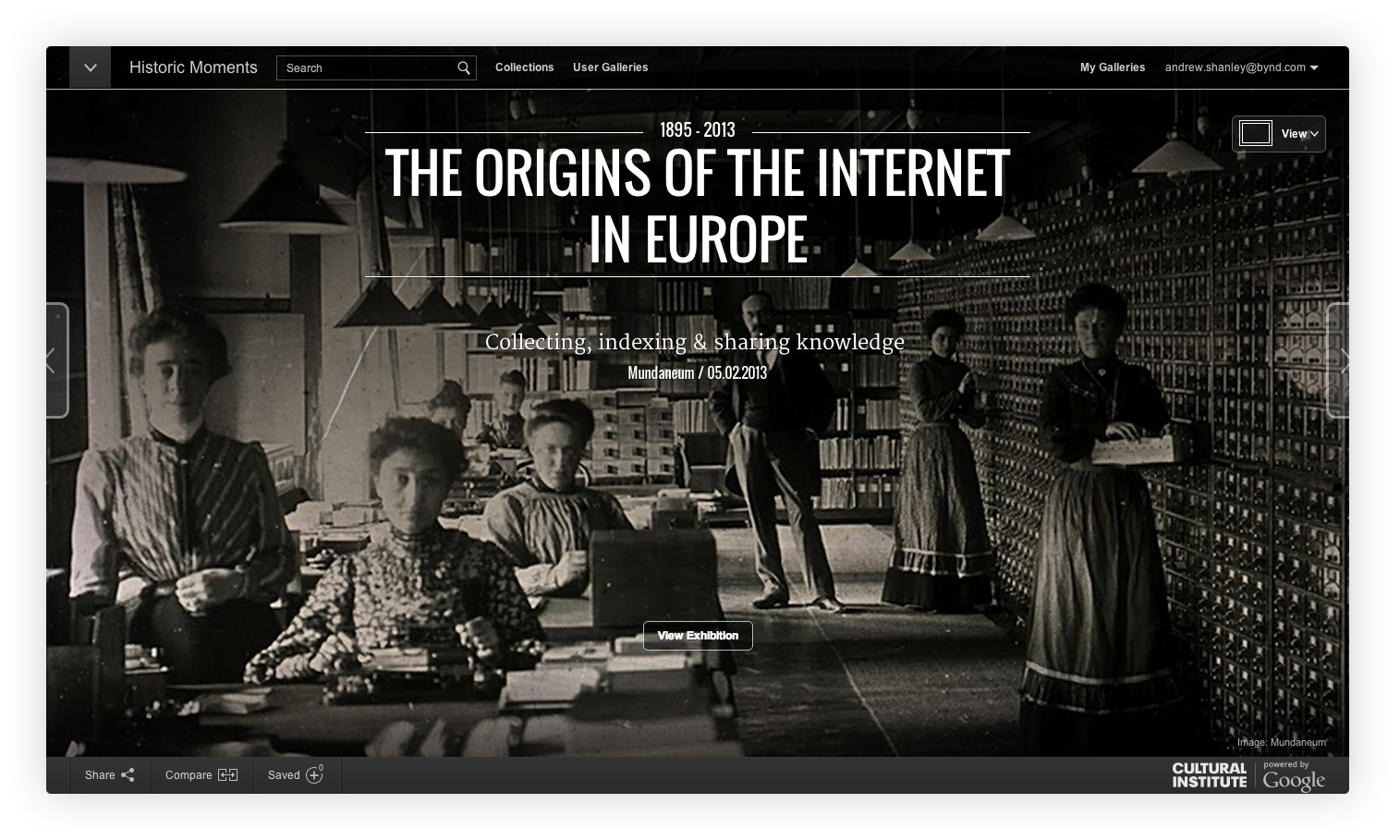

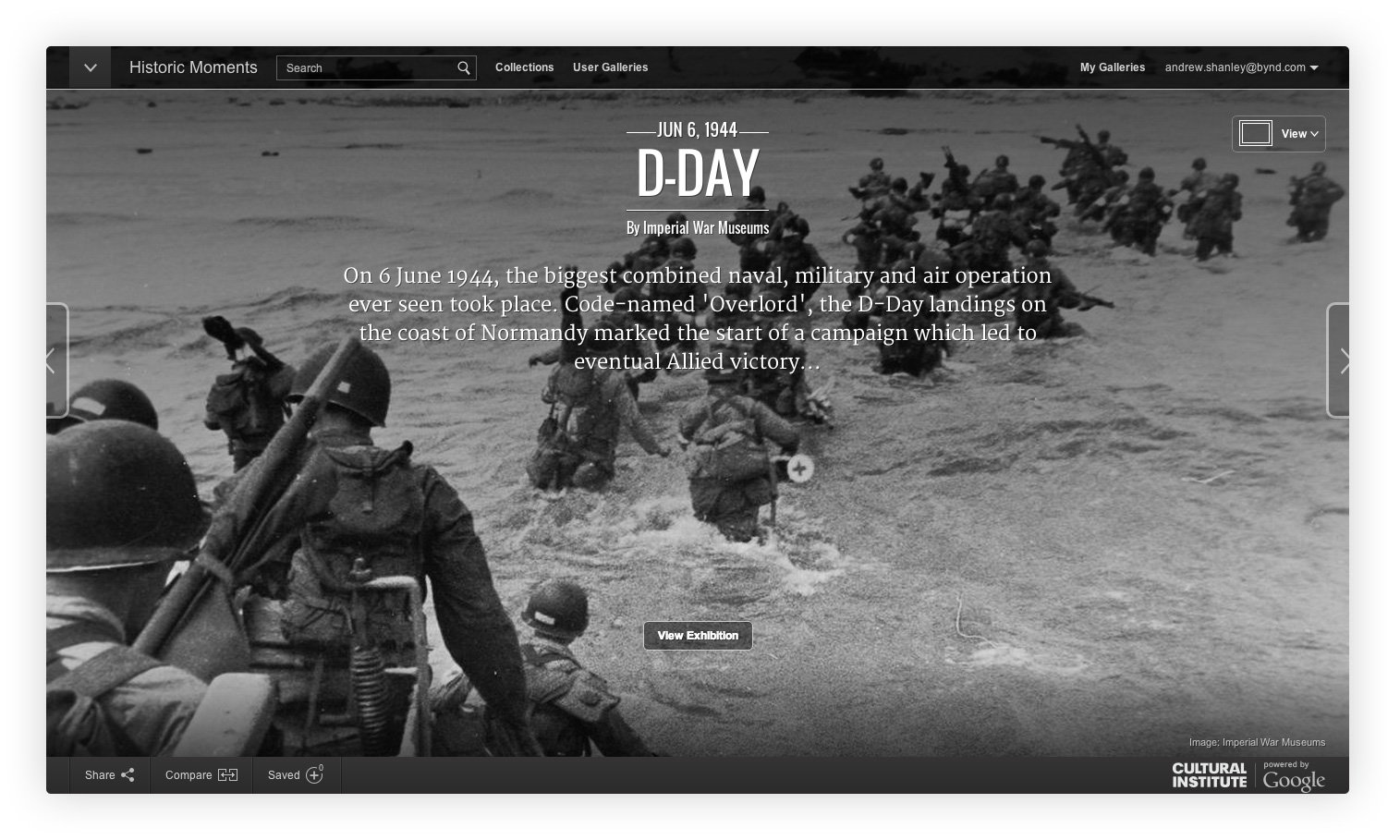
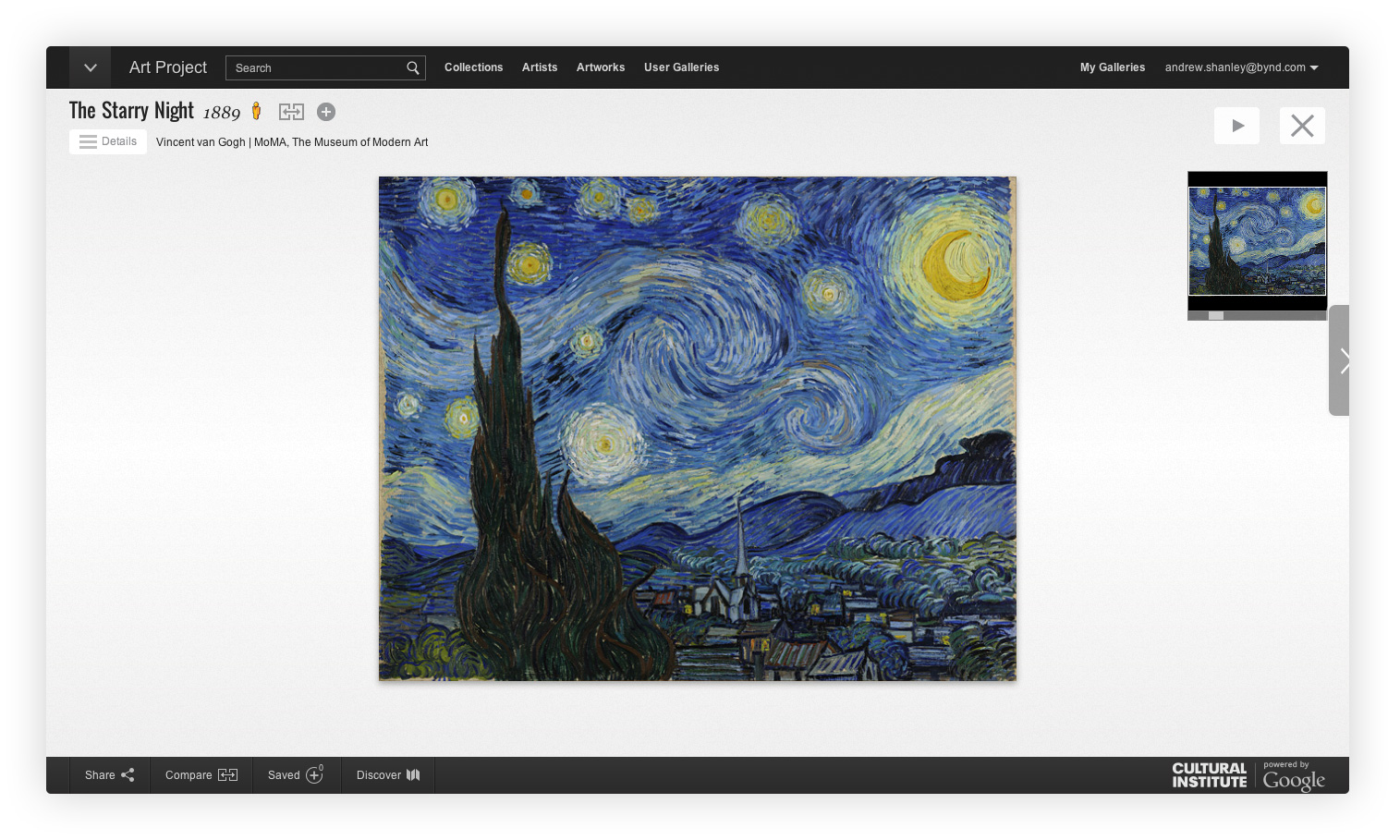

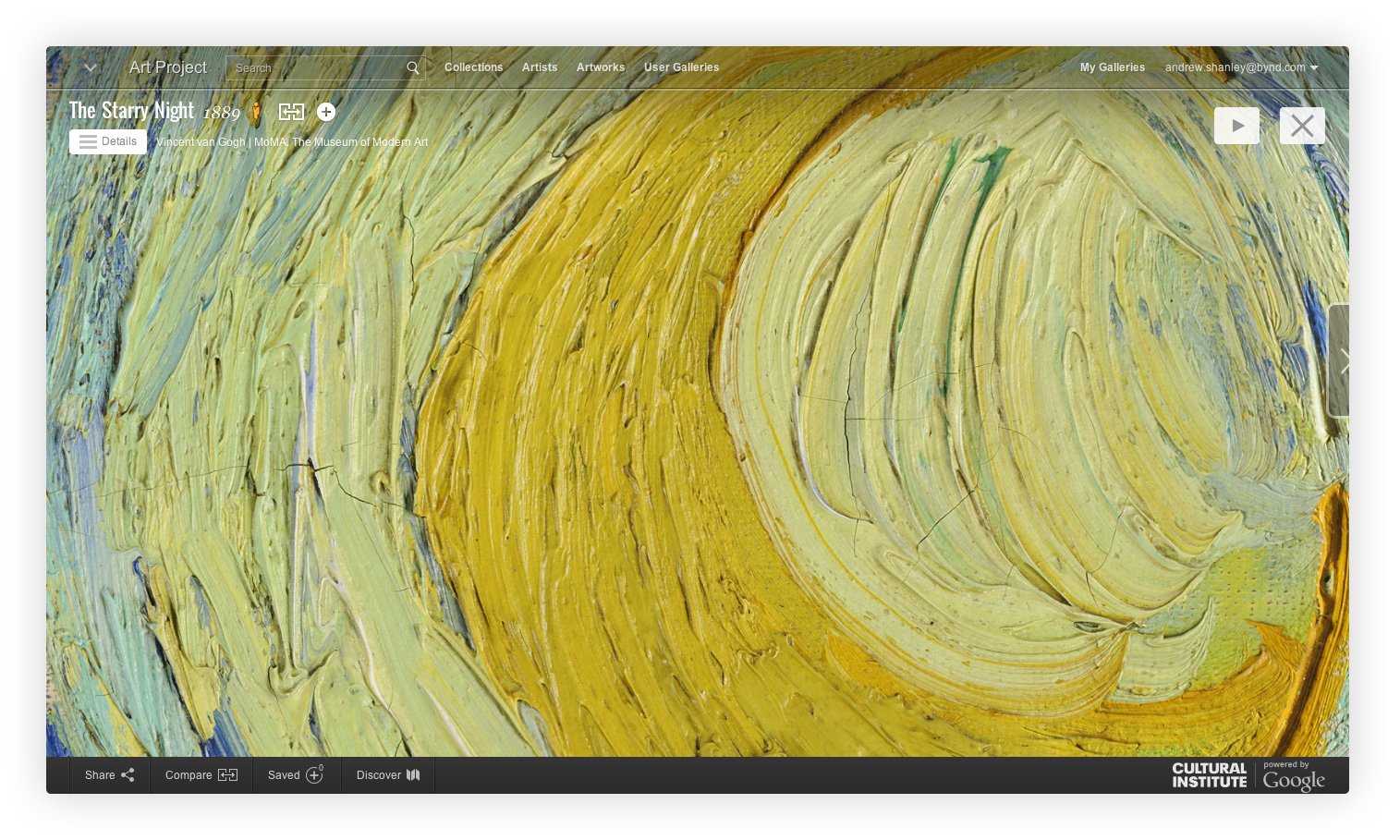
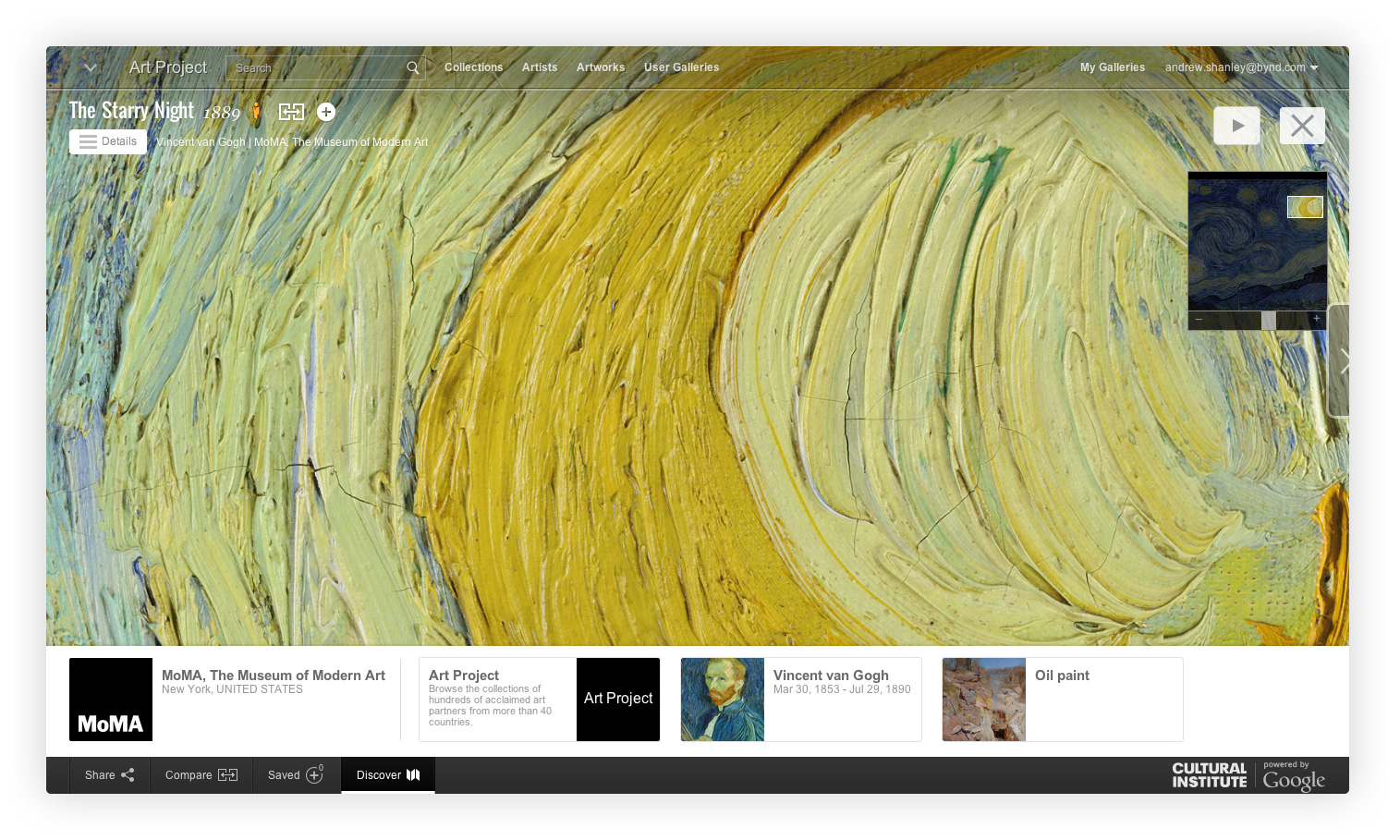
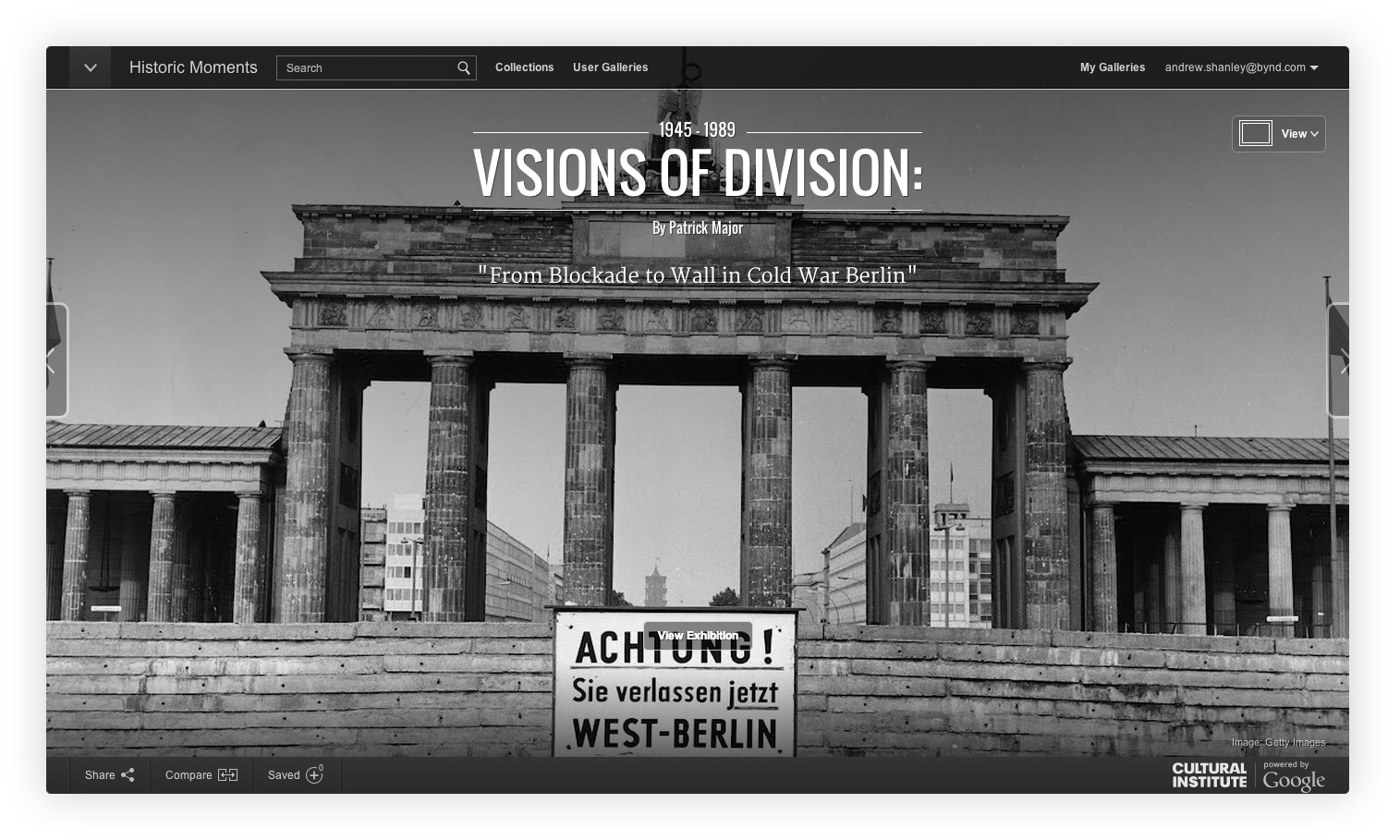
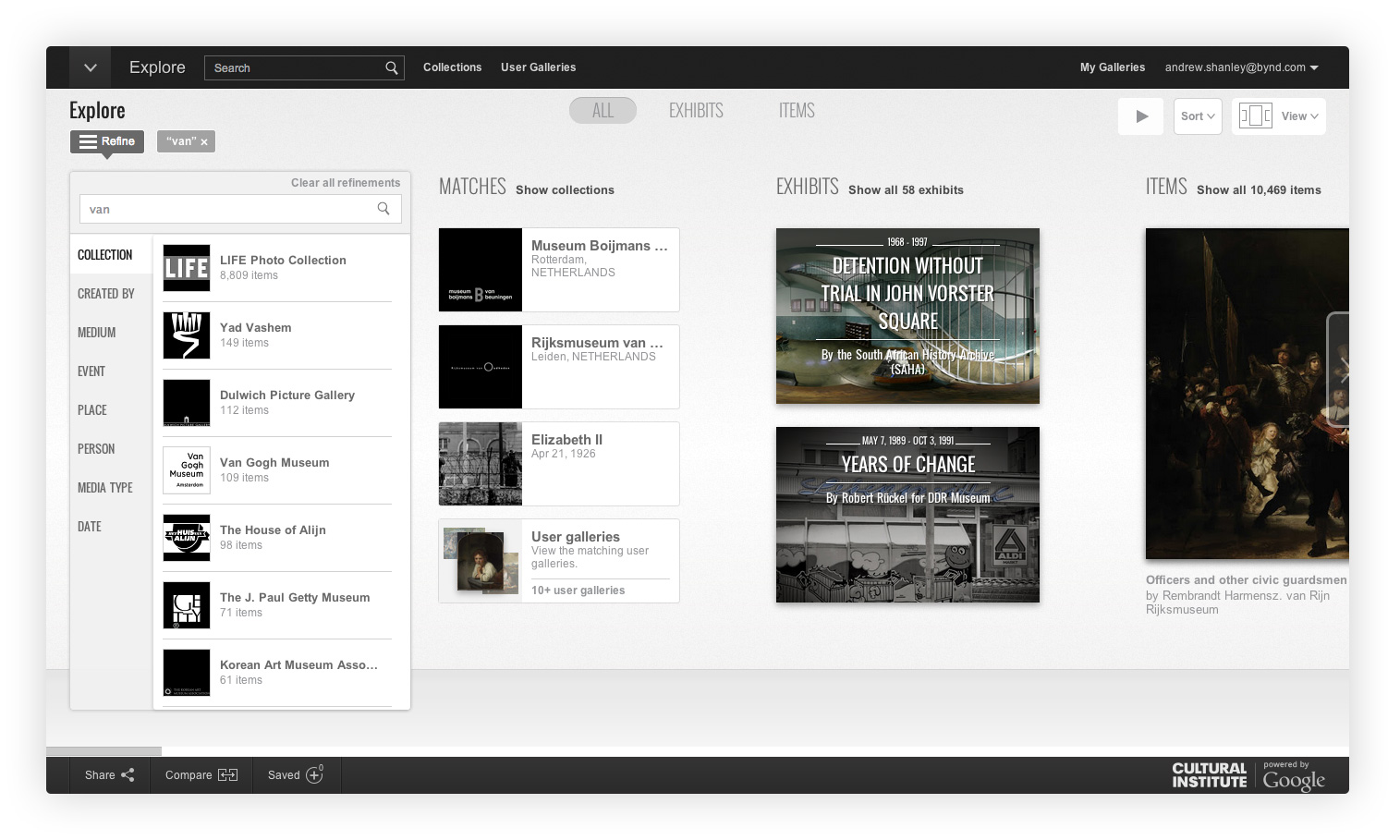
I spent a large portion of 2012–13 working between London and Paris on Google’s Cultural Institute initiative
Headquartered in Paris, Google’s Cultural Institute's aim is to make important cultural material available and accessible to everyone and to digitally preserve it to educate and inspire future generations.
At its heart, the Cultural Institute is a large-scale platform purposefully designed for ingesting, organising, and interacting with millions of digital assets of cultural relevance. I was responsible for designing not just the B2C front-end experience, but also the B2B ingesting, organizational and archiving back-end systems.
As of 2017, the initiative is now known as Google Art & Culture. More information can be found on Wikipedia.
Mapping the system journey
As the project’s Lead UX, alongside the Lead Visual Designer, we often took to the whitewalls to map out the architecture for the overall experience of the platform and its various projects. Here, my main responsibilities were creating journeys, wireframes and interfaces to map user's mental models of navigating a real-world gallery, exhibition or art institution with digital models of interaction.
Working in this way meant we were able to constantly and quickly revisit the system’s underpinning IA, design and navigational models which, through various integrations, partnerships and releases, changed vastly over the 12+ months.
The result of one of many all-day sketching sessions
Collection screen sketches
Entity screen sketches
Timeline search sketches
Entity faceting sketches
Wireframes and interaction models
Concepts that were green-lit by Google’s Product Owner were recorded to a higher fidelity wireframe format and shared with Designers and Engineers at Google to develop:
“Wall” view wireframe
Managing artifacts interactions
Navigational menu states
6-up zoom/pan states and interactions
6-up zoomed artifact (modal panels)
6-up map view and Street View states
Roadmap releases
The Google Cultural Institute collaboration lasted for well over a year, spanned more approximately 12 projects and numerous product releases, including:
1 - Cultural Institute initial launch
One of many designs to support the initial Cultural Institute launch
2 - Partner and curator toolkit
B2B toolkit for partners to upload assets and create exhibitions and galleries
3 - Upgraded artifact viewer
Improved version of viewing assets and artifacts via modal/overlay
4 - Partner white-labeled version
Partner versions of the platform housed only the artifacts owned by that partner
5 - Integration with Google Art Project
Google Art Project’s absorption into the Cultural Institute platform
6 - Navigation and masthead updates
Navigation updates to support Art Project and partner channel integrations
7 - Histogram timeline faceting
Histogram faceting visually indicates the amount of content per moment in time
9 - Guided audio exhibition tour
An experience comparable to a documentary or guided audio tour
10 - Theme-level pivoting
Pivoting allowed users to seamlessly switch between subject matters
11 - Collections for educators
User collections allowed teachers to curate sets of assets for their classrooms
12 - Art Project comparison tool
Art comparison allowed users to compare different artworks by different artists
The result
7 million cultural artifacts from over 1,400 institutes!
By 2014, Google’s platform held a total of 1,400 cultural institutions from over 70 countries, 7 million archival artifacts, 200,000 high-resolution digital images of original artworks, over 1,800 Street View museum captures, and more than 3,000 online exhibitions curated by experts.
Press
A selection of press cuttings can be found below:









